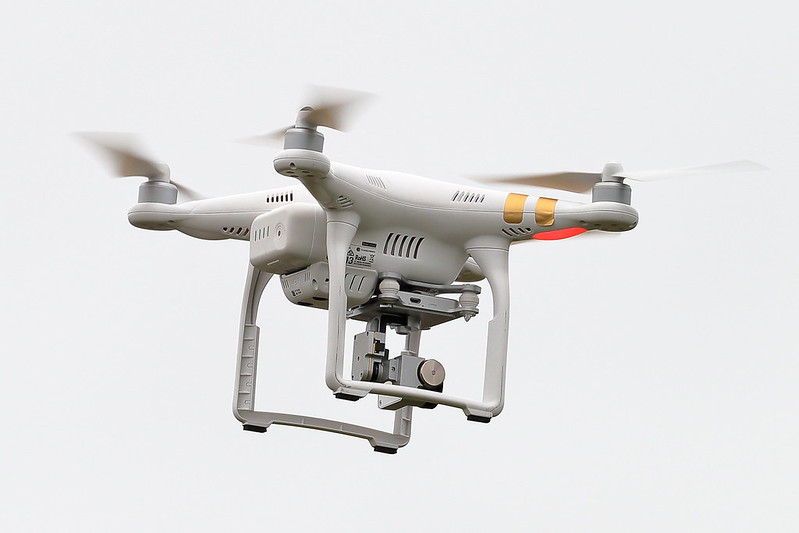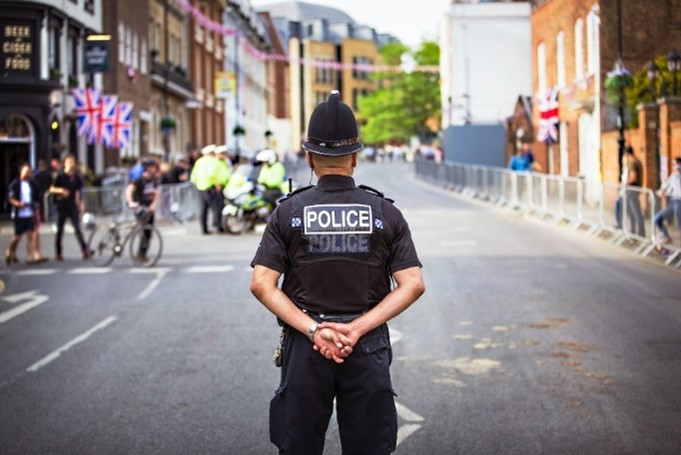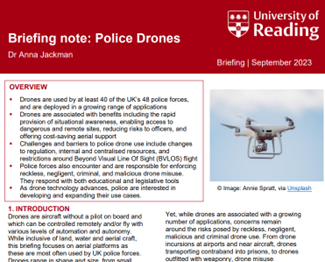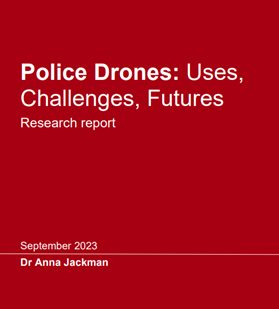Drones are increasingly common in UK skies. In January 2023, the Civil Aviation Authority (CAA) estimated that it has registered 500,000 drone ‘operators and flyers’ under its Drone and Model Aircraft scheme and processes 7,000 operational authorisation applications per year.

The UK Government supports drone innovation, with a 2022 report stating that ‘by 2030 commercial drones will be commonplace in the UK’ and will ‘share airspace equitably and safely with other users’. Initiatives such as Project Skyway, an 165-mile drone superhighway connecting the airspace above six UK towns and cities, including Reading, aim to realise such visions.
Drones are also increasingly popular tools for UK emergency services, with estimates that at least 40 of the UK’s 48 police forces are using drones.
Yet, while praised as carrying out ‘tasks faster, safer, cheaper and with less impact on the environment than traditional methods’, drones remain associated with incidents of reckless and negligent, as well as malicious and criminal flight and misuse.
From flights in proximity to manned aircraft and over sensitive sites, to transporting contraband into prisons, drone misuse raises safety, security and nuisance concerns. 6000 drone incidents were reported to police in 2021 alone, with roughly 5% of these incidents constituting a criminal offense.
UK police occupy a curious relationship with drones. Both using drones as operational tools and responsible for the policing of drone misuse, they are at the forefront of the benefits drones can bring, as well as the risks drones remain entangled with.
As part of my research project, Diversifying Drone Stories, I led focus groups with police officers to explore their use of drones and how they are policing drone misuse. These are some of my findings.
Operational uses and benefits of drones in policing
UK police forces deploy drones in routine, pre-planned and spontaneous operations, from command oversight and crime scene monitoring to organised crime and thermal flyovers.
Drones are operationally valuable because they enable rapid collection of image, video and sensor data which can be shared to provide critical real-time information. Drones can also be used to enter and assess remote, inaccessible and dangerous locations and environments, lowering risks to officers on the ground.
Drones can support the provision of police air support by increasing access (for example, for forces located between National Police Air Service bases), increasing speed of deployment, and being less environmentally impactful.
Officers described exploring and trialling novel drone applications including livestreaming, LiDAR (remote sensing method to determine ranges), tethered drones, modified attachments (for example, winches and loudspeakers), and sensors, including electronic sniffers, CBRN (Chemical, biological, radiological and nuclear detection) and sonar.
Challenges and barriers to drone use
While adoption grows, challenges and barriers to police drone use include regulation, resourcing, national and/or centralised conversations, and technical and operational limitations.
Participants in my study expressed frustration at the frequency of changes to regulation and described the knock on effects of these on workload. They also discussed the challenges of securing funding for equipment, as well as managing budgeting in the context of shorter aircraft lifespans.
Officers expressed a desire for further national and/or centralised conversations, though had differing views on the centralisation of police drone training and the standardisation of police drones. Some preferred locally and force-driven approaches given the diverse contexts and needs of UK forces.
Lastly, officers raised technical limitations such as weather resilience, battery life and flight time, and operational limitations such as confinement to static operations, connectivity and operating frequency issues.
Responding to drone misuse
While many users fly in accordance with relevant rules, drones are also variously misused.
When discussing responses to drone misuse, officers described a desire, where appropriate, to focus on education. But they can also call on relevant legislation, including The Air Navigation Order 2016 (particularly Articles 240 and 241, stipulating that a person must not endanger an aircraft, nor permit an aircraft to endanger any person or property) and The Air Traffic Management and Unmanned Aircraft Act 2021 (permitting officers who suspect a drone could be involved in the commission of an offence various powers).
Officers described incidents where emergency responses have been interrupted due to external drones. CAA guidance instructs that drone flights must not hamper emergency service response where action is ongoing to preserve life, protect the public or respond to a crime in progress.
While recognising budget constraints, officers wanted additional resourcing for responding to drone misuse and for specialist skills (for example, drone forensics).
Lastly, some police forces are deploying or trialling counter-drone technology to detect, track, identify and intercept drones. The Government’s Counter-Unmanned Aircraft Strategy includes the provision of further resource in this area.
You can read more about the project findings in the open access Briefing Note and Report.
Dr Anna Jackman is a Lecturer in Human Geography at the University of Reading.



